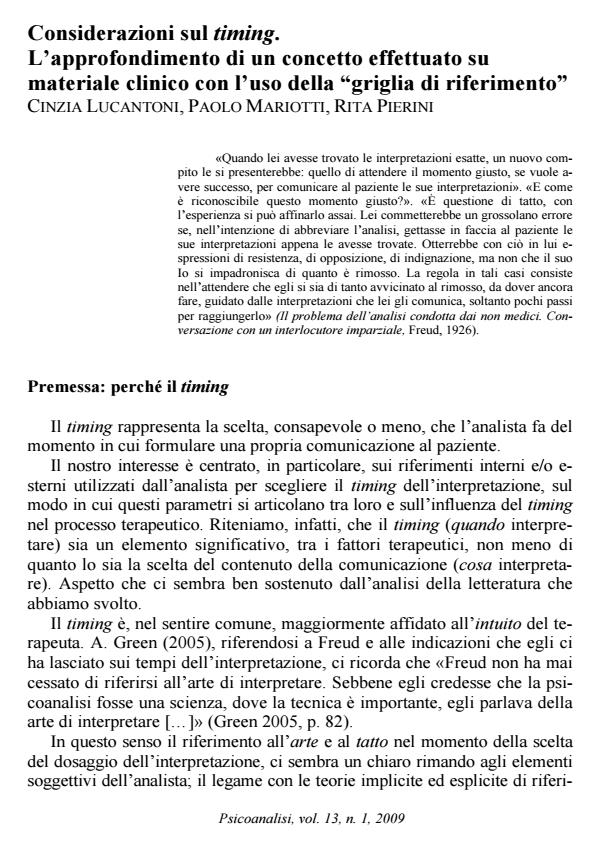Considerazioni sul timing. L’approfondimento di un concetto effettuato su materiale clinico con l’uso della"griglia di riferimento"
Journal title PSICOANALISI
Author/s Cinzia Lucantoni, Paolo Mariotti, Rita Pierini
Publishing Year 2009 Issue 2009/1 Language Italian
Pages 28 P. 69-96 File size 1243 KB
DOI 10.3280/PSI2009-001005
DOI is like a bar code for intellectual property: to have more infomation
click here
Below, you can see the article first page
If you want to buy this article in PDF format, you can do it, following the instructions to buy download credits

FrancoAngeli is member of Publishers International Linking Association, Inc (PILA), a not-for-profit association which run the CrossRef service enabling links to and from online scholarly content.
Some notes on timing. Deep investigation of a concept on the basis of some clinical material with the use of the "reference grid" - The authors aim to deepen the concept of timing. They focus on the internal and external facts used by the analysts in the choice of when to interpret. Following an accurate historical examination of the concept of timing, some detailed clinical material is presented. A specific greed is articulated as an instrument used to deepen those aspects that have an influence on the analyst’s choice of the timing of interpretation. Evidence shows that countertransference factors are determinant in the choice of the timing thus giving shape to unconscious resistances that delay interpreting. The Authors show how the capacity to work through and self analysis allow instead to maintain the awareness of the ongoing psychoanalytic process
Parole chiave: timing, alleanza terapeutica, role responsiveness, griglia, teorie implicite, controtransfert
Key words: timing, therapeutic alliance, role responsiveness, grid, implicit theories, countertransference
Cinzia Lucantoni, Paolo Mariotti, Rita Pierini, Considerazioni sul timing. L’approfondimento di un concetto effettuato su materiale clinico con l’uso della"griglia di riferimento" in "PSICOANALISI" 1/2009, pp 69-96, DOI: 10.3280/PSI2009-001005